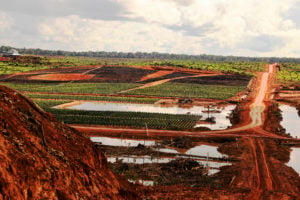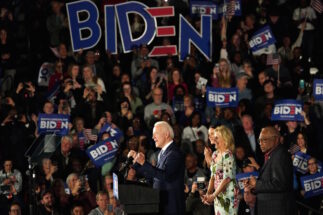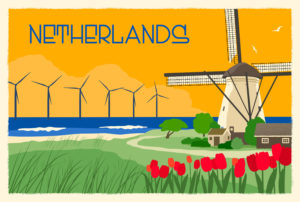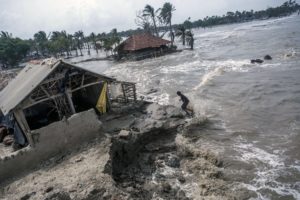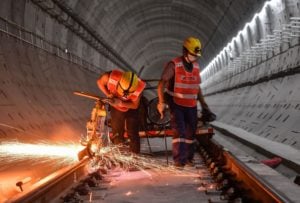It took six years to get the electric Orange Line Metro Train up and running in Lahore. The city of 11 million people has been smothered in dust and endured traffic jams, but many of its residents say the “gift from China”, which kicked off operations in October, is well worth all their suffering.
“It will reduce traffic congestion, reduce fuel consumption and save time,” said 21-year-old Sulaiman Ahmed, explaining the advantages of the first mass transit system.
The early morning motorbike ride from his home in Gulshan-e-Ravi to the university campus in Johar Town used to take 40 minutes. But the ride home could take up to two hours due to traffic jams, he said.
Ahmed’s new commute by train has been brought to a standstill by the second surge of Covid-19 cases across the country and closure of educational institutions until January. While it is mandatory to wear a mask to enter stations, he admitted “fewer people were taking that precaution inside the carriage”.
A greener urban future?
Built under the China-Pakistan Economic Corridor (CPEC), the USD 1.6 billion Orange Line is the first of three planned metro lines in Lahore and is designed to carry nearly a quarter of a million people a day in Pakistan’s second-largest city. It is one of many rail and metro projects China is financing around the world and aims to reduce “traffic congestion and related air pollution, greenhouse gas emissions and noise emissions” in a city suffering from a chronic lack of public transport and unhealthy smog, according to a website analysing the Belt and Road Initiative’s impact on urban development, of which CPEC is a key part.
See:Lahore gets smoggier by the day
“One of the key causes of degrading air quality in Pakistan is vehicular pollution, due both to the fuel quality as well the type and number of vehicles on the road,” pointed out Imran Khalid, head of the Environment and Climate Change programme at Islamabad-based think tank the Sustainable Development Policy Institute. The electric Orange Line “can go a long way in stemming pollution” he said, if it reduces people’s reliance on inefficient and polluting vehicles, particularly two-stroke rickshaws and motorcycles.
![The Orange Line trains will help to reduce air pollution in Lahore [Image by: Nazia Ajmal]](https://dialogue.earth/content/uploads/2020/12/Orange-Line-Metro-Train-Lahore-Pakistan-4-scaled-1.jpg)
The Orange Line will also help take 380 buses off the road, bringing the total fleet down to around 3,770 vehicles and reducing carbon emissions by over 145,000 tonnes a year, using calculations based on the Delhi metro.
See:Pakistani military in charge, provinces sidelined in a revived CPEC
The metro covers 27 km at 35 km per hour, reducing a two-hour commute across the city to 45 minutes. “By December 2020, the train will operate from 06:15 to 22:00 just like the [existing] Metrobus system,” said Muhammad Ozair Shah, general manager of the Punjab Masstransit Authority. It stops at 26 stations across the city, with almost all of it on elevated rail except for 1.7 km underground.
Long-term plans
Shah said that a metro train for Lahore had been on the cards for nearly three decades but did not materialise due to “change in governments, insufficient funds and inability to agree on loan agreements”.
The project got a shot in the arm after China’s Exim Bank agreed to extend the loan on the condition that Chinese enterprises will execute the project using Chinese equipment.
Constructed by China Railway, it will be operated for eight years by a consortium comprising a Chinese engineering firm Norinco International, Guangzhou Metro Group and Daewoo Pakistan.
Orange eyesore
The project has been mired in controversy. In 2016, construction was suspended by a Lahore court because it threatened UNESCO world heritage sites; the verdict was later overturned by the Supreme Court of Pakistan.
Kamil Khan Mumtaz, an architect in Lahore, said buildings and sites that “make Lahore what it is with its history, its heritage, its culture” were blasted into nothing. “Entire neighbourhoods, like the old Anarkali where people lived and had worked for generations, look like a Nagasaki” he added, pointing to the blatant “violation of historic monuments” which he described as a “criminal act”.
Activists also say the project dislodged people from their homes. According to official documents, over 200 families were displaced, as well as an institute for disadvantaged children, shops and a squatter settlement. They were compensated with a “historic package” of PKR 20 billion (USD 125 million).
In addition to the social costs, Mumtaz said worries how “a cash-strapped country like ours would pay for this luxury”.
He estimates the Punjab government will pay “PKR 74 million per day (USD 460,800) in subsidies”. He suggested selling the train line to a private operator and buying buses instead, because “Lahore has a good road network for the buses to ply on”.
Conceding Lahore needs a “smart green transit system” like the Delhi metro, Imrana Tiwana, another architect, said the Orange Line remained “absolutely unacceptable”, as it is “in violation of the law” and a complete misfit for a historic city with its Mughal-era “protected heritage”. She described it as “a huge white elephant” that will be used by only 1% of Lahore’s population.
In fact, only about 0.6% of Lahore’s population (62,000 people) use the train at the moment – with just 24% of the trains’ capacity being used.
Steep fares
Rather than fears of Covid-19, Shah from the Punjab Masstransit Authority said it is the ticket price that will deter people from using public rail in Lahore, with a single fare costing PKR 40 (USD 0.25). In addition, he said, people still have to take another mode of transport to reach their final destination, and that is an additional cost.
The 200 metro feeder buses are insufficient, although another 400 are to join soon. In the meantime motorcycle rickshaws are carrying out the task.
The train is more expensive than motorcycle rickshaw (which cost PKR 10-20 or USD0.06-0.12), but is faster and cheaper than other modes of transport, such as taxis.
See: Pakistan says yes to electric bikes and rickshaws, no to cars
Ahmed’s monthly travel expenses have fallen by nearly half from PKR 5,000 (USD 30) spent getting to the campus by motorbike to PKR 2,700 (USD 17) travelling by metro and rickshaw. “The fare suits me just fine,” he said.
Nazia Ajmal, who commutes to her job at a pharmaceutical company, also said the train is “cost-effective”. She has switched from using a taxi, which cost her over PKR 20,000 a month (USD 128), saving half the amount although it takes her the same 35 minutes to reach the office.
Employment
The Orange Line has created about 4,000 jobs just from its operation and maintenance, according to Shah, and during its construction employed “more than 7,500 labourers”.
But labour rights activists remain concerned about the contract system that prevails, where workers are subcontracted without benefits, job security or safety assurances. “When cost-cutting begins, Pakistani workers will be the first to get sacked,” said Khalid Mahmood, director of the Labour Education Foundation (LEF). “This is what we saw with the Metrobus System,” he said.
In 2017, seven Orange Line workers died in a fire at their makeshift home. The LEF “found out the horrendous condition they worked and lived in, including a complete lack of safety measures”. The previous year seven Orange Line workers were killed when a wall collapsed. Mahmood said over 50 labourers have died in the past six years.
He was also wary of the lack of transparency and secrecy shrouding the project, with no public information on how many Chinese workers were employed or their pay. “Nobody is willing to share any details,” he said.
![<p>Currently only about 0.6% of Lahore’s population use the Orange Line, with 24% of the trains’ capacity being used [Image by: Xinhua/Jamil Ahmed]</p>](https://dialogue.earth/content/uploads/2021/01/Orange-Line-Metro-Train-Lahore-Pakistan-OLMT-2-scaled.jpg)

